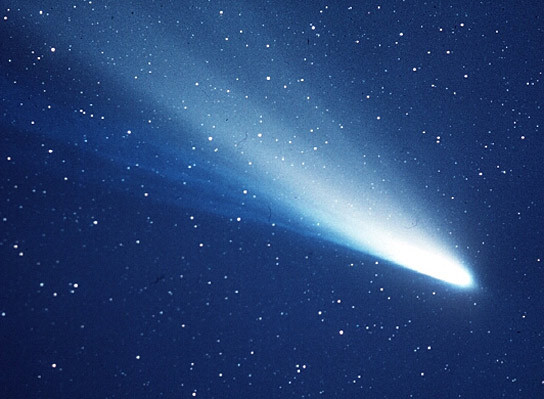Eta Aquarids 2014: The Meteor Shower from Halley's Comet Set to Brighten Night Sky
The Eta Aquarid meteor shower is due to peak on 5 May, but will be visible in the night sky through to 7 May – the shower has a fairly broad maxim, so can be seen for several days.
The Eta Aquarids originate from the comet 1p/Halley in the constellation of Aquarius. It produces this meteor shower in May, and the Orionids in October.
This year, the meteor shower is expected to produce up to 45 meteors per hour that will be travelling at around 44 miles per second.
Because they are travelling so fast, they can leave glowing trains – bits of debris – which can last for several seconds and upto a minute in some cases. The Eta Aquariad meteors are known as 'earthgrazers' because they are long meteors that appear to skin the surface of Earth on the horizon.
For 2014's shower, the moon will set out of midnight, meaning the dark sky will allow for optimal viewing. The best time to watch is during the few hours before dawn.

Where to watch
While visible in both the Northern and Southern hemispheres, they will be better seen from the south because of the location of the radiant at the different latitudes. Aquarius is higher in the sky in the Sothern hemisphere.
People watching in the Northern hemisphere can expect to see around 10 meteors per hour.
In the Southern Hemisphere, the meteor numbers "increase dramatically", EarthSky reports, with two or three times more meteors visible in comparison to the north.
How to watch
Nasa advises people to find an area away from city lights: "Come prepared with a sleeping bag, blanket or lawn chair," the agency said. "Lie flat on your back with your feet facing east and look up, taking in as much of the sky as possible. After about 30 minutes in the dark, your eyes will adapt and you will begin to see meteors. Be patient - the show will last until dawn, so you have plenty of time to catch a glimpse."
EarthSky also notes: "Give yourself at least an hour of viewing time for watching any meteor shower. Meteors tend to come in spurts that are interspersed by lulls. Also, it can take as long as 20 minutes for your eyes to adapt to the dark.
"You need no special equipment to watch a meteor shower, but a little luck always helps. Meteor watching is a lot like fishing. Sometimes you catch a good number of them and sometimes you don't."
Halley's Comet

The pieces of debris that create the Eta Aquarids come from Halley's Comet, which takes about 76 years to orbit the sun and was last seen from Earth in 1986. Every time Halley returns to the inner solar system, its nucleus sheds a layer of ice and rock, which eventually become the Eta Aquarids and the Orionids.
Halley's Comet was discovered in 1705 and is one of the most famous, having been sighted for around 1,000 years – it even appears in the Bayeux tapestry.
Watch live online
People who miss the Eta Aquarids - or those in the Northern Hemisphere who are disappointed with what they saw - will also be able to watch the shower live online. A broadcast of the display will be shown via the Slooh telescope
"Slooh will cover the Eta Aquarid Meteor Shower live all night using special imaging techniques from North America along with commentary from Slooh astronomer Bob Berman," the website notes.
© Copyright IBTimes 2025. All rights reserved.























